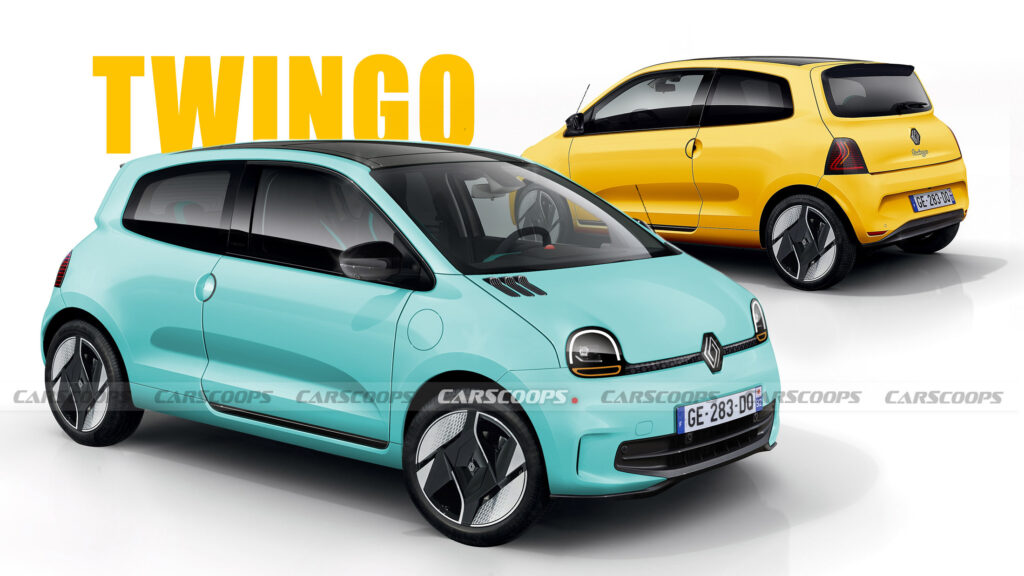The upcoming model will be based on the same underpinnings as the 2025 Dacia Bigster SUV and will provide customers with a choice between two different body styles

Dacia has certainly been a success story within the Renault Group, known for its cost-effective approach. It was only a matter of time before the Romanian brand expanded its lineup into more mainstream segments. Following the Duster and Bigster SUV siblings, Dacia is currently developing two new compact-sized models: a crossover wagon and a fastback-style sedan, both set to debut in 2026.
While detailed information on the new Dacia models is still limited, we’ve gathered all the available information and even created speculative renderings of the upcoming crossover wagon. This should provide you with a glimpse of what to anticipate from these additions to Dacia’s lineup.
The new project, known as the Dacia C-Neo, is aimed at filling a gap in the automotive market. Many mainstream automakers have either discontinued traditional internal combustion engine (ICE) compact hatchbacks and sedans or committed to going fully electric in this segment. This has created a void in the market for affordable ICE-powered models. Dacia is stepping in to seize this opportunity by offering a vehicle with a roomy interior, adventurous characteristics, and a competitive price tag. Think of it as the Romanian response to the highly successful Skoda Octavia, which is available in both three-box hatchback and combi (wagon) body styles.
advertisement scroll to continue
More: New 2024 Dacia Duster Is A Tougher, Spacier And Now Electrified SUV Bargain

Jean Francois Hubert/SB-Medien
As shown in our renderings, the Dacia C-Neo is anticipated to adopt the new design language introduced by the Duster and Bigster SUVs. It will likely include slim LED lights, sleek surfaces, and design elements commonly found in crossovers, imparting a sense of adventure. In addition to the wagon variant pictured, there will also be a sleeker fastback version that combines the convenience of five doors with a three-box silhouette.
The C-Neo is expected to measure around 4,600 mm (181 inches) long, resulting in a spacious cabin. For reference, the Dacia Jogger crossover wagon is 4,547 mm (179 inches) long and is already offered with a seven-seater layout. It’s possible that the dashboard and most of the controls will be shared with the Duster and Bigster SUVs, allowing Dacia to save on research and development expenses. Additionally, Dacia’s extensive range of accessories will make it an ideal choice for camping and various outdoor activities.
Shared Underpinnings And Multiple Powertrain Options

In regards to the underpinnings, Dacia’s entire lineup is built on Renault Group’s CMF-B architecture, which provides cost-saving benefits in both production and development. The C-Neo models won’t be an exception, sharing their underpinnings with the Bigster, Dacia’s upcoming flagship SUV offering.
Powertrain option are expected to include mild-hybrid, bi-fuel (gas/LPG), and hybrid versions, with the possibility of a plug-in hybrid in the future. A strong contender for the compact models is Renault’s turbocharged 1.2-liter three-cylinder gasoline engine, featuring a 48 V mild-hybrid system, producing 128 hp (96 kW / 130 PS). This engine is currently used in the Dacia Duster where it is available in FWD and AWD forms. As for the full hybrid, there are rumors about a new 1.8-liter engine that could be introduced in the Bigster in 2025 as an evolution of the electrified 1.6-liter Hybrid 140 mill found in the Jogger and the Duster.
A Value-For-Money Proposal
While the C-Neo project has yet to be formally announced, Denis Le Vot, CEO of Dacia, has confirmed that two new models are set to debut in 2026. Given Dacia’s pricing strategy, the C-Neo model will likely undercut similarly-sized competitors like the VW Golf, Peugeot 308, Opel Astra, and Toyota Corolla. At the same time, they are expected to bridge the gap between the Duster and the Bigster in Dacia’s lineup in terms of both spaciousness and pricing.
We anticipate that Dacia officials will release more details about these compact-sized models before our spy photographers come across camouflaged prototypes in the coming months.
Note: The independent renderings are off-the-record and unrelated to Dacia

Jean Francois Hubert/SB-Medien













